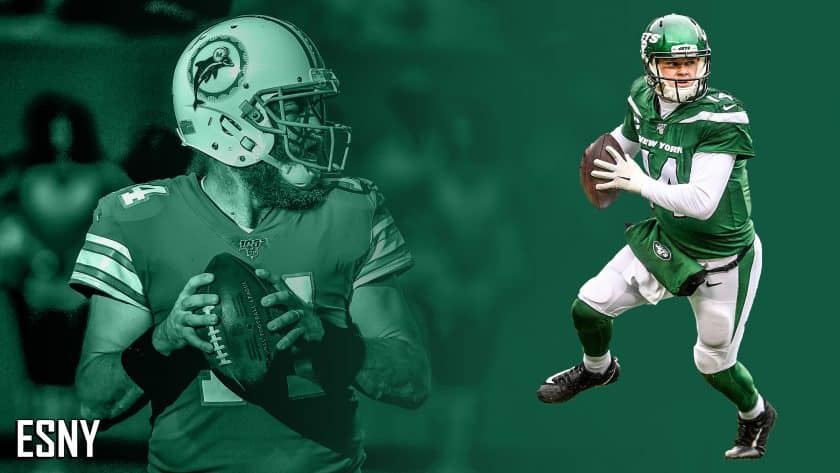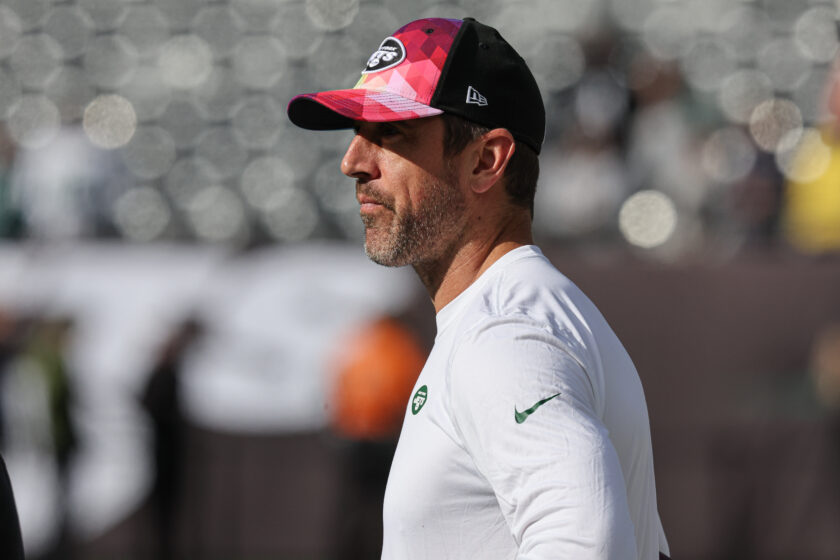New York Jets – Miami Dolphins statistical scouting report

The 4-8 New York Jets welcome in the 3-7 Miami Dolphins for Week 14 NFL action this Sunday at MetLife Stadium.
Throughout the season, I’ll be previewing the New York Jets‘ opponent each week with a look at their greatest strengths and weaknesses from a statistical standpoint.
Let’s dive into some key numbers on the Miami Dolphins heading into this Sunday’s divisional clash.
Dolphins offense
Strength: Red zone
After a historically atrocious four-game start to the season in which they averaged 6.5 points, the Dolphins have shockingly managed to field a decent NFL offense.
Since Week 7, Miami has averaged 22.6 points per game and an offensive EPA of +0.5, a mark that would rank 21st in the league this season. These numbers are nothing groundbreaking, but for a team that had over four times as many turnovers (nine) as touchdowns (two) through Week 4, this is a substantial improvement.
The Dolphins have been extremely effective in the red zone. They have scored a touchdown on 67.7 percent of red-zone trips, which ranks fourth-best. Since the bye week, they have been even better, scoring a touchdown on a league-best 80.8 percent of trips inside the 20. Miami’s total of 21 red zone touchdowns since Week 6 is tied with Baltimore for the most in football over that span.
Ryan Fitzpatrick and DeVante Parker have driven Miami’s success in the red zone. Since Week 6, Fitzpatrick is tied for third in the league with 11 red zone touchdown passes, while Parker is tied for fourth with four red-zone touchdown receptions.
Parker is enjoying a career year in his fifth NFL season. He is averaging career-highs in first downs per game (3.5) and yards per game (71.2), while his total of six touchdown grabs is already a career-best. Over the past three weeks, Parker leads the entire league with 385 receiving yards, 66 more than any other player over that span.
Weakness: Rushing attack
Miami’s run game has been horrendous, ranking last in yards per game (62.8), yards per attempt (3.1), and DVOA.
As is often the case when a team struggles to run the ball (the New York Jets being a prime example), the offensive line is to blame for Miami’s rushing issues. The Dolphins’ leader in rush attempts, Kalen Ballage (who is now on IR), averaged 0.6 yards before contact this season. That is by far the worst mark among running backs with at least 70 carries. Patrick Laird, who led Miami with 10 rush attempts in Week 13, is averaging 0.7 yards before contact.
The Dolphins rank last in adjusted line yards-per-carry, a metric that estimates yardage produced by the offensive line on a per-carry basis. They also own the league’s highest stuff rate, with 25 percent of their carries resulting in no gain or a loss.
Dolphins defense
Strength: Red zone… sort of
This is a historically terrible Dolphins defense. While the offense has turned things around, Miami has remained arguably the worst defensive team in the league. It requires some serious grasping at straws to find a “strength” for Miami on the defensive side.
Their red zone defense is not good, but the Dolphins have been slightly less awful in the red zone than they have been in most areas.
Miami has yielded a touchdown on 60.9 percent of red zone drives, 24th-best. Yes, this is about the best they have to offer.
Brian Flores’ team has been somewhat decent at stopping the run near the goal line. The Dolphins have allowed a conversion on 29.9 percent of rush attempts in the red zone, which ranks 19th.
Weakness: Pass coverage
The Dolphins are improved, but make no mistake. Their defense — which is just the fifth in league history to allow 29 touchdown passes and a 105.0 passer rating through 12 games — remains awful.
Miami is ranked 32nd in points allowed per drive (2.62) and 32nd in defensive DVOA (32nd vs. the pass, 29th vs. the run).
Opposing offenses have carved up the Dolphins with ease. Miami has allowed the highest touchdown pass rate (7.3 percent), second-highest passer rating (105.3), and second-most net yards per attempt (7.5). The pass rush has been a huge part of those failures, as the Dolphins rank last in sack rate (3.9 percent) and pressure rate (17.7 percent).
Teams love to pick on Miami’s corners. Three Dolphins cornerbacks are among the top-20 most frequently targeted players at the position (out of 132 qualifiers) — Ken Webster (targeted once every 4.7 snaps), Nik Needham (5.3), and Ryan Lewis (5.4).
The Dolphins also sorely lack a consistent pass rusher. Their leader in pressures is Vince Biegel, who is tied for 65th in the league with 25 pressures (just 2.1 per game).
Special Teams’ notes: Dolphins missing Jakeem Grant in the kick return game
The Dolphins (17th in overall special teams DVOA) rank fourth in kick return DVOA, the only special teams’ phase in which they rank top-10.
Jakeem Grant, who is now on IR after 10 games, was responsible for that success. Grant picked up a 101-yard kickoff return score against the Bills in Week 11, the second-longest kick return in the NFL this season. He added five other returns that crossed the 25-yard line.
Miami’s other kick returners have not been able to match Grant’s success, combining to average 14.9 yards per return (although two onside/squib recoveries are included in there) and failing to take any of five legitimate return opportunities beyond the 25-yard line.
Jets/NFL at ESNY ----- Twitter: @Michael_Nania ----- Cool Your Jets Podcast with Ben Blessington






